ハボタンは欧州で古くから食用に供されてきた「ケール」を、日本で観賞用に改良。花の少ない冬の花壇を、花のように美しい葉が彩ります。
Ornamental Cabbage is an ornamental version of “Kale” in Japan, which has long been eaten in Europe. Beautiful leaves like flowers color the flower bed in winter when there are few flowers.
【仮名】ハボタン
【和名】葉牡丹
【英名】Ornamental Cabbage, Ornamental Kale, Flowering Kale
【学名】Brassica oleracea var. acephala f. tricolor
【誕生】01/ 05, 11/ 27, 12/ 04, 12/ 30
【開花】01, 02, 11, 12月
【花色】White, Pink, Purple
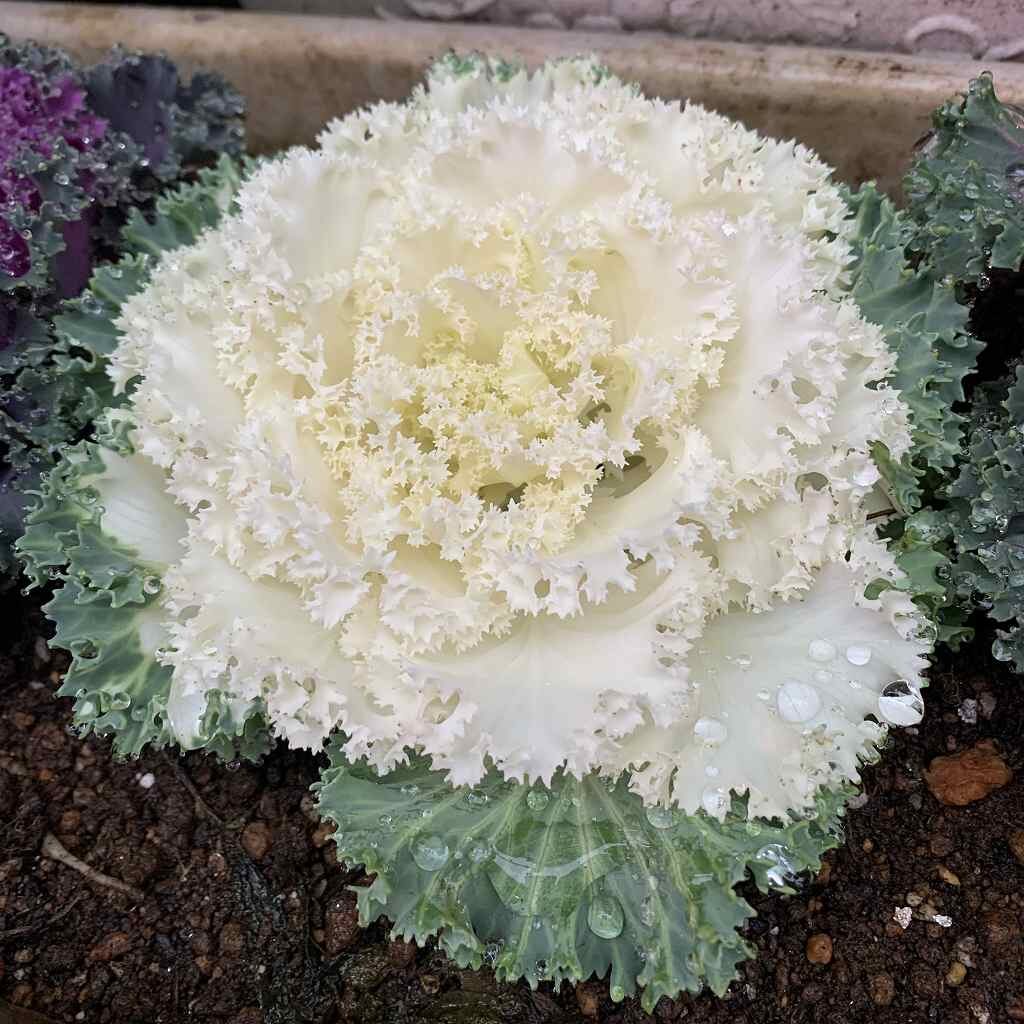
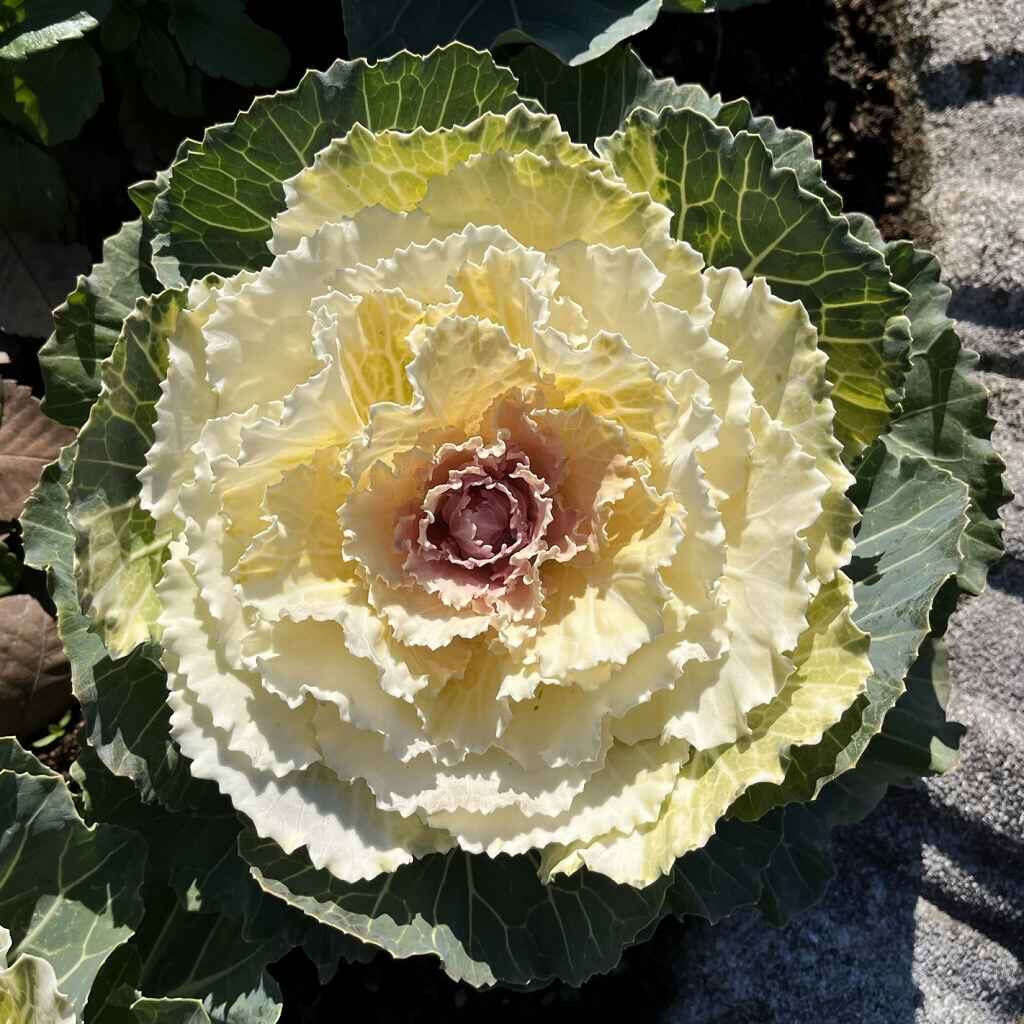
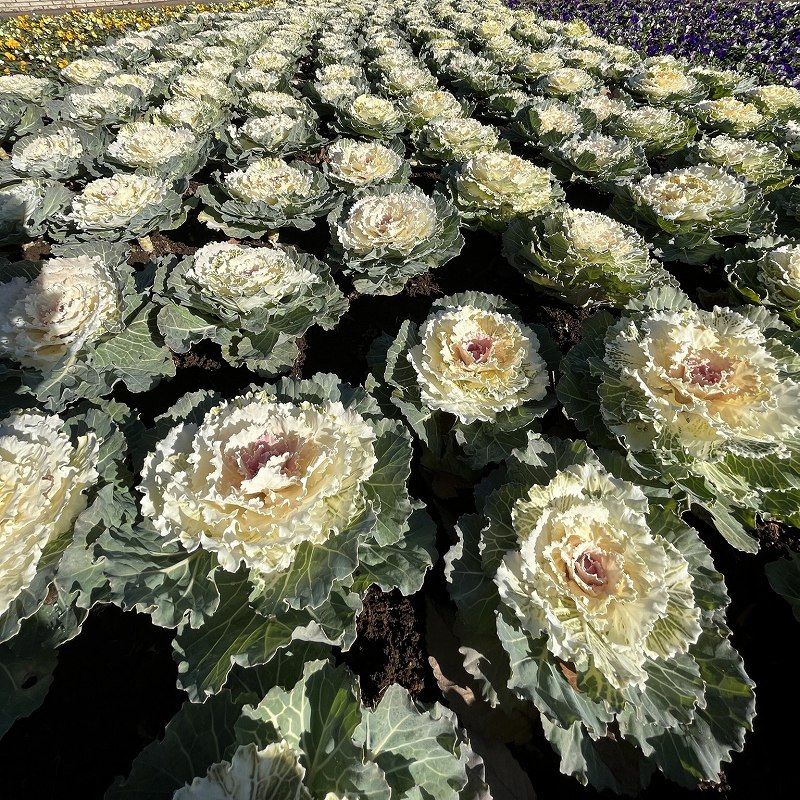
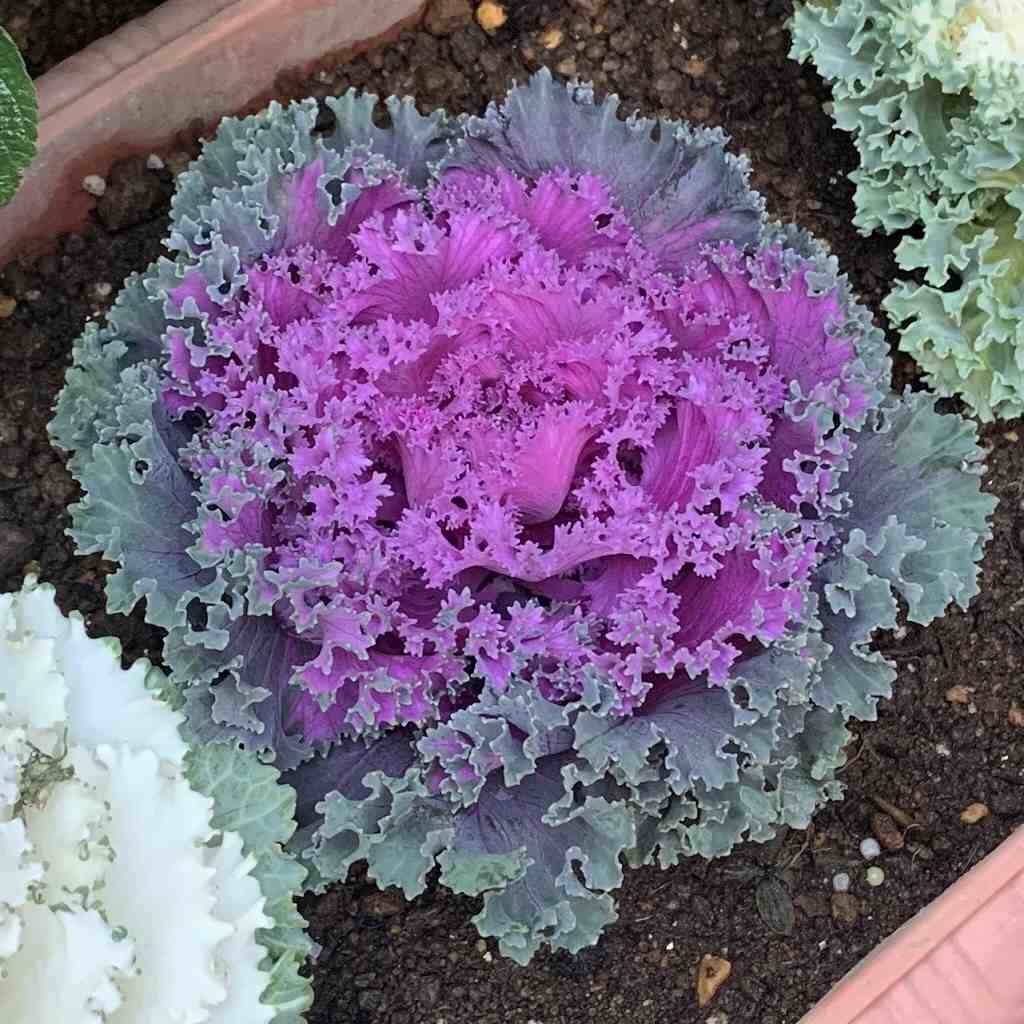
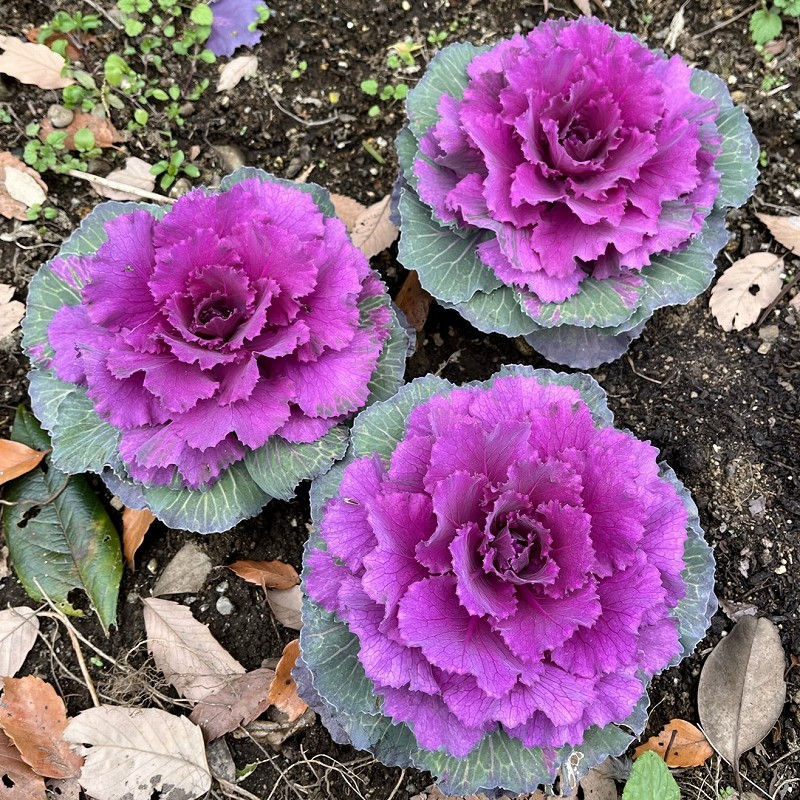
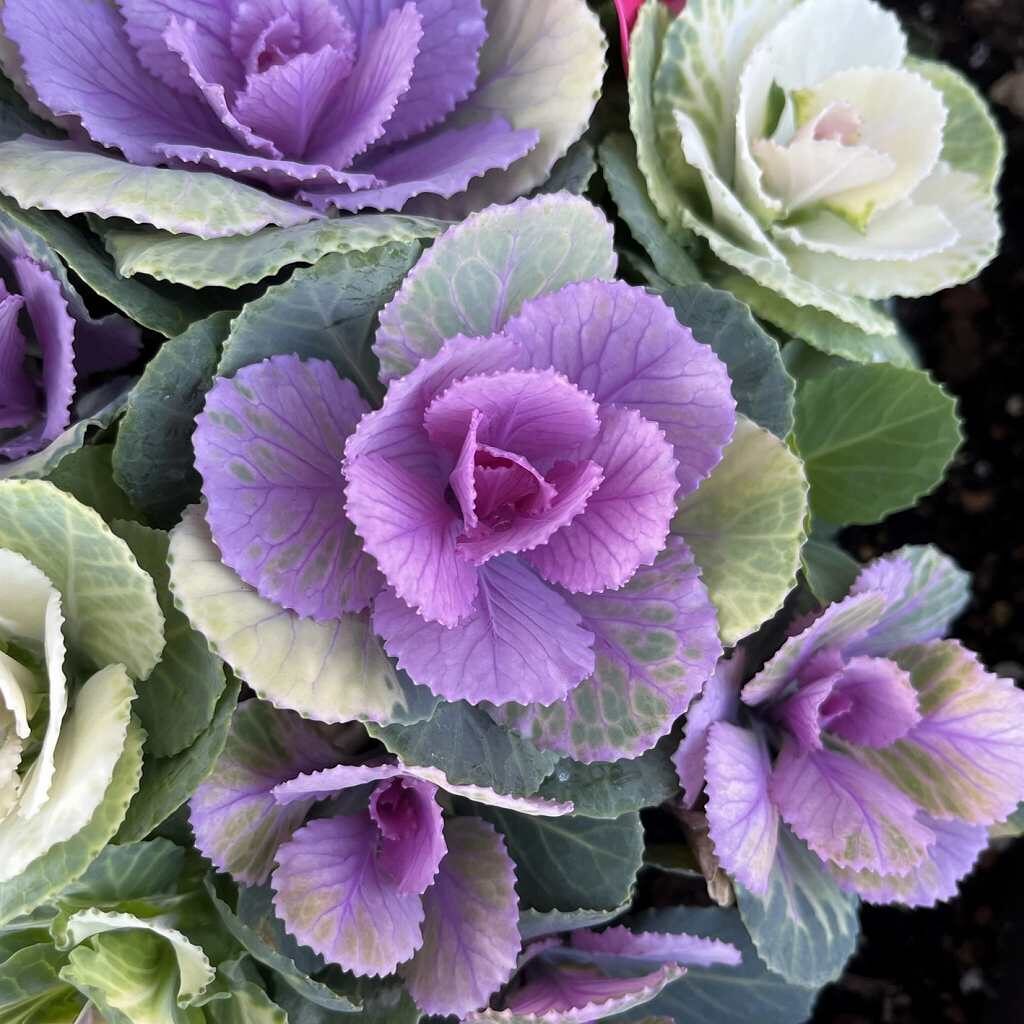
ハボタン
ハボタンの来歴
ハボタンはアブラナ科の多年草です。原産地は欧州の地中海沿岸。原種はビタミン類などの機能性成分を多く含み、古くから食用に供されてきた「ケール」です。日本へは17世紀に伝わり、観賞用として栽培され、各地で改良。花の少ない冬の花壇を、花のように美しい葉が彩ります。
ハボタンの名前
ハボタンの和名の由来は、幾重にも巻いている葉が牡丹の花のように見えるからです。ラテン語の学名は長く、「アブラナ属ヤセイカンラン種の変種であるケールの品種で3色のもの」といった意味。短く言い換えると「キャベツの仲間の食用のケールを鑑賞用に改良したもの」です。
ハボタンの葉
ハボタンは寒さに強い一方、気温の高い地域や室内などでは、葉が緑色のままで色づきません。色づきの仕組みは、まず外側の葉が緑色で展開するものの、内側の葉が展開するころには低温に晒されて緑色が抑制。内側の葉は白色のままだったり、アントシアニンの赤紫色が現れます。
ハボタンの茎
ハボタンは、放っておくと春に花茎が立ち上がり、先端に菜種のような黄色の花が咲きます。花は交雑しやすく、傍に近縁種が植わっていると、親株の形質を受け継がない種子が結実。さらに放っておくと、軸が上に伸びて太い茎になり、先端で葉を重ねて「踊り葉牡丹」になります。
ハボタンの系統
ハボタンのおもな系統は江戸時代に葉の滑らかな「東京丸葉系」、明治時代に葉の縮れる名古屋「縮緬系」、第二次世界大戦後に東京と名古屋の系統を交配して葉の波打つ「大阪丸葉系」が作出。そのほか、葉に切れ込みが入るもの、光沢があるもの、草丈が高くなるものもあります。
Ornamental Cabbage
Ornamental Cabbage is a perennial herb of the Brassicaceae family. It is native to the Mediterranean coast of Europe. The progenitor is “Kale”, which contains many functional ingredients such as vitamins and has been used for food since ancient times. It was introduced to Japan in the 17th century, cultivated for ornamental purposes, and improved in various places. Beautiful leaves like flowers color the flower bed in winter when there are few flowers.
The Japanese name of Ornamental Cabbage means the many-folded leaves that look like peony flowers. The Latin botanical name is long, it is “Brassica oleracea var. acephala f. tricolor Hort.” To put it simply, it is “The edible kale of the cabbage family that has been improved for ornamental purposes.”
While Ornamental Cabbage is resistant to cold, the leaves do not change color in areas with high temperatures or indoors. The mechanism of coloring is that the outer leaves first develop green, but by the time the inner leaves develop, they are exposed to low temperatures and do not develop green. The inner leaves remain white or develop an anthocyanin reddish-purple color.
In the spring, Ornamental Cabbage raises its flower stalk, and yellow Rapeseed-like flowers bloom at the tips. Those flowers are easy to hybridize, and if closely related species are planted nearby, they produce seeds that do not inherit traits from the parent. As time goes on, the stem grows upward and becomes thick, and leaves are piled up at the tip to become “Dancing Ornamental Cabbage”.
The main strains of Ornamental Cabbage were created, the “Tokyo round leaves” with entire leaves in the Edo period, the Nagoya “Curly leaves” with serrated leaves in the Meiji period, and the “Osaka round leaves” with wavy leaves after World War. In addition, there are some that have notched leaves, some that are glossy, and some that grow taller.


